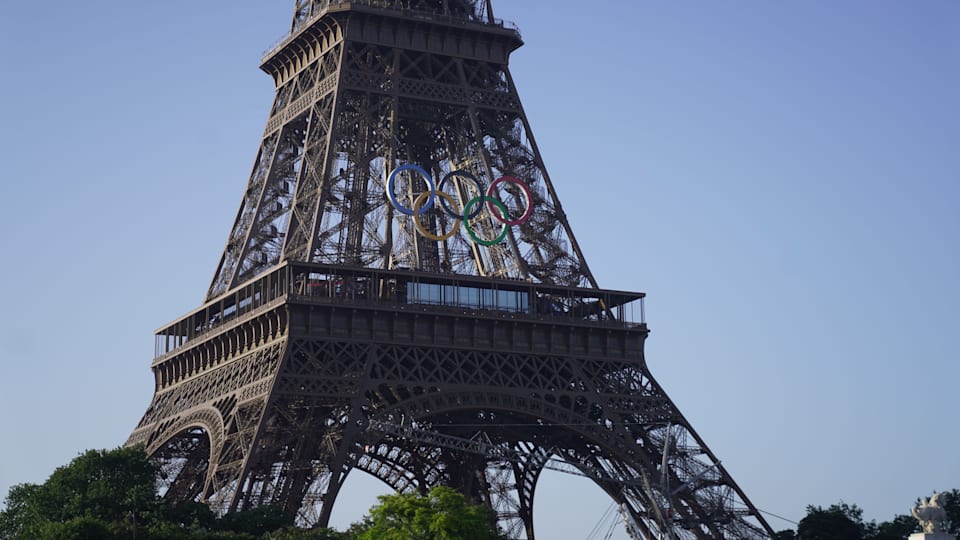50 days to go - Paris 2024: the Eiffel Tower wears the Olympic rings

The Eiffel Tower is dressing up for the Olympic Games. On Friday 7 June, the five Olympic rings were installed between the first and second floors of the Eiffel Tower with 50 days to go until the Opening Ceremony of the Olympic Games Paris 2024.
Parisians could see them on their way to work, as about 200 workers and security agents laboured through the night to ensure everything was ready by the early morning.
Hélène, who lives nearby and came out of curiosity, said: "We finally realise that the Olympics are happening soon. It looks nice, it brings a bit of colour to the Eiffel Tower."
The rings, also known as "spectaculars", were the stars of the show due to their gigantic format – 29 metres wide, 13 metres high and about 30 tonnes. Each ring has a diameter of nine metres.
Paris 2024 president Tony Estanguet commented: "It is wonderful. There are a lot of emotions, and we can feel that things are happening. With the Olympic Torch Relay travelling across the country and now with the unveiling of the Olympic rings, it will transform the face of Paris and rally the entire nation for these memorable Olympic Games."
Paris 2024 medals reveal: A look back at some of the most memorable designs
Colour rings by day, white rings by night
It was a natural choice for the hosts to pick the Eiffel Tower. "We wanted the most iconic symbol of the Olympics – the rings – to meet the most iconic symbol of Paris – the Eiffel Tower," said Paris 2024 managing director Michaël Aloïsio.
The Eiffel Tower also inspired the design of the medals, each of which contains a piece of the iconic structure, as well as the design of the podiums, which feature its geometric shapes carved into them.
"The Eiffel Tower is the most beautiful symbol of the capital city of our country; that is why it is the core of most of our projects," added Estanguet
The Olympic rings will be in their traditional colors – blue, yellow, black, green, and red from left to right – by day, and will turn white by night, as the black ring would be barely visible in the dark. Made of 100,000 low-intensity LEDs, the rings will shine until the end of the Paralympics in late September.
The impact of the weather
Before shining on the Eiffel Tower, the Olympic rings were made and tested elsewhere in France. ArcelorMittal, the company in charge of the torches and cauldrons for the Olympic Torch Relay, oversaw their production.
A fully recycled iron structure was first made in late 2023 by ArcelorMittal in Châteauneuf (Loire) and Le Creusot (Saône-et-Loire). The iron was then laminated in Dunkerque (Nord), cut in Denain (Nord), and folded, welded and painted near Épinal (Vosges) in May 2024.
According to ArcelorMittal project manager Pierre Engel, two factors had to be considered by the engineers: "the weight and the resistance to the weather. Paris can be windy, especially around the Eiffel Tower."
"We had to make sure the rings respond dynamically under the wind. We did not want to take any risks. You have to tame the elements."
A full-scale test was held in May to assess the stability and assembly of the Olympic rings. The 11 parts of the rings were transported to Paris by truck and assembled there.
The Eiffel Tower is now dressed for the occasion and ready to be admired by thousands of people gathered along the River Seine, as well as by billions of viewers on 26 July during the Olympic Games Paris 2024 Opening Ceremony.